Who knew that 25 years ago one of motorsport’s biggest dynasties was set to change the face of racing forever? It was the year Jeff Gordon won his first championship and set in motion the wheels of a juggernaut that took NASCAR and motorsport to new heights.
A quick trawl through eBay and you’ll find everything from cereal boxes and Christmas decorations to bottle openers, crock pots, and Barbies all adorning the number 24 that Gordon and his Hendrick Motorsport team turned into a mega brand still synonymous with NASCAR today.
The journey didn’t start in anything like that way. A short-oval sprint and midget car racer, Gordon had expected to head in the direction of IndyCar and pitched to teams before the resounding voice rang true – make a career of it in NASCAR.
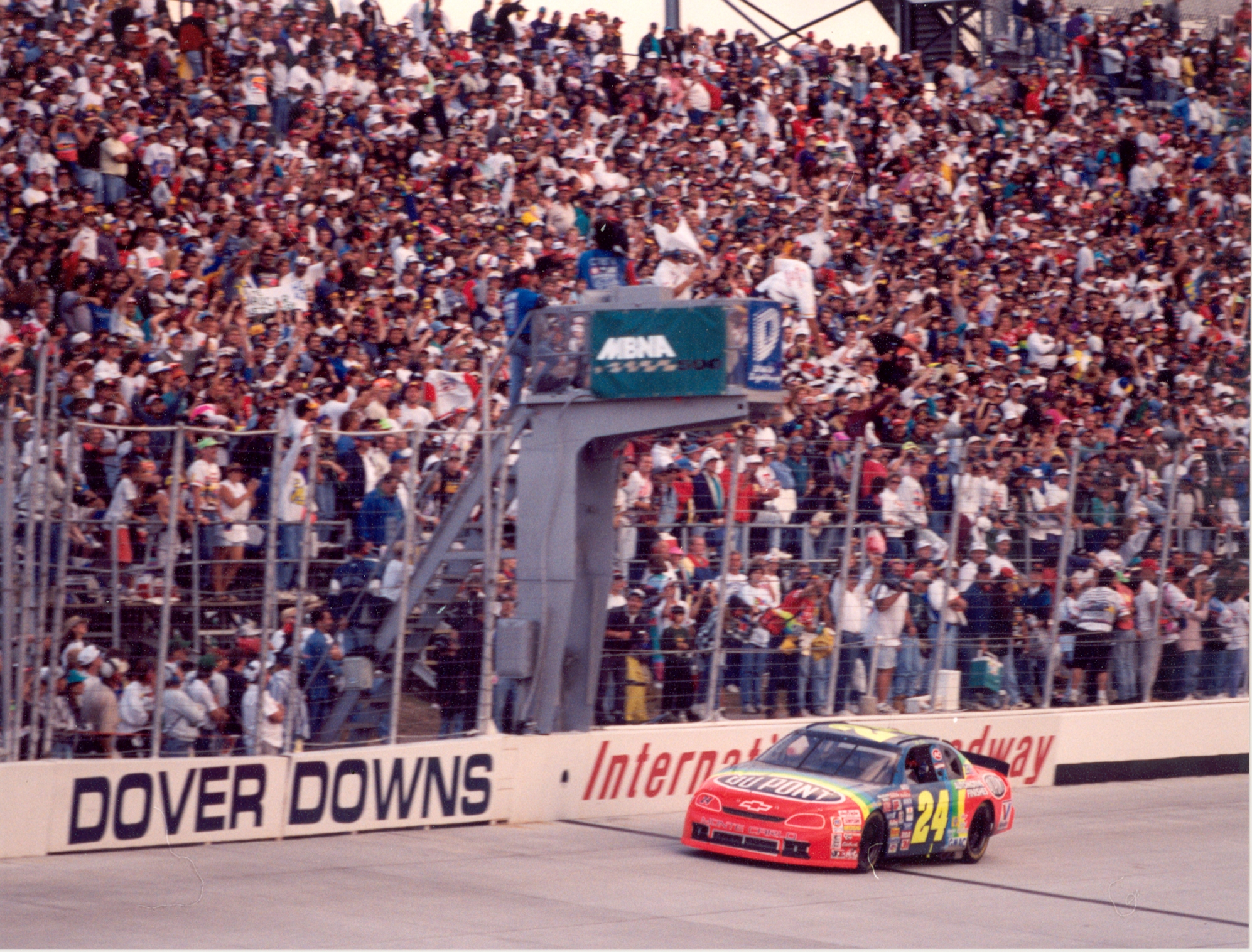
After impressing Buck Baker at his driving school – where Hugh Connerty kept his second-tier Busch (now Xfinity) Series car and let Gordon take it for a spin, with Gordon promptly beating his time by 1.5s – he switched to race full-time in the Busch Series for the aspirational Bill Davis in 1991 and 1992.
Davis had dreams of making it to the Winston Cup Series and ran Ford cars. When Gordon really started to step up in 1992, Ford began to shop Gordon to its big Cup teams run by Jack Roush and Junior Johnson. But ultimately, Ford couldn’t advertise Gordon too hard without making it known to Davis that his manufacturer was going behind his back!
In a championship still entrenched in the south and its ‘good ol’ boys’, the youthful California-born Gordon couldn’t have been a more unlikely fit if he’d have tried
All of that didn’t matter though, as a fateful puff of smoke had already changed Gordon’s future forever. At the Atlanta Busch Series race, Rick Hendrick stood at Turn 4 and having seen the smoke rising, was certain a crash would follow. Instead, a sideways car hugged the Turn 4 wall and danced towards the pit straight.
“He was one of the best I’d ever seen,” said Hendrick (below right) recalling the memory in Gordon’s book His Dream, Drive & Destiny. “I just felt this was my chance to have a Michael Jordan.”
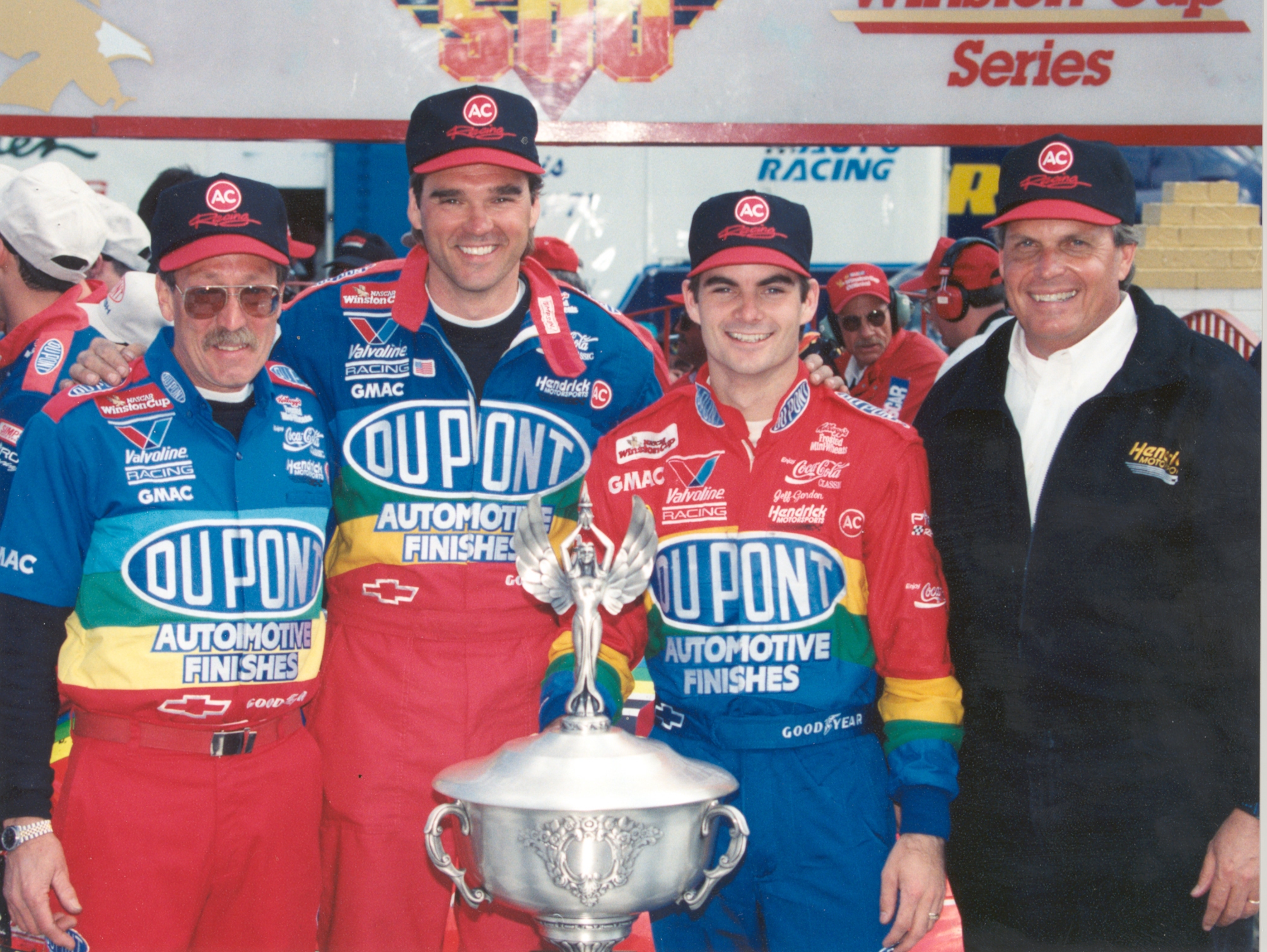
At the end of the year, Gordon made his debut in the 1992 Hooters 500, also at Atlanta. It was a seminal NASCAR race as seven-time champion Richard Petty’s last and Gordon’s first.
If the bright day-glow yellow #24 wasn’t enough to announce Gordon on the scene, the rainbow paint scheme the likes of which had never been seen in NASCAR before only added to the rich image of ‘the new’.
It was totally unheard of for a 21-year-old to get a Cup Series seat at that time – especially one that had less than two years of stock car experience. And in a championship still entrenched in the South and its ‘good ol’ boys’, the youthful California-born Gordon couldn’t have been a more unlikely fit if he’d have tried.
“Like a baseball player coming into the NBA,” was how Gordon described it, and his crew chief Ray Evernham from New Jersey – also new to the Cup Series – was equally out of place.
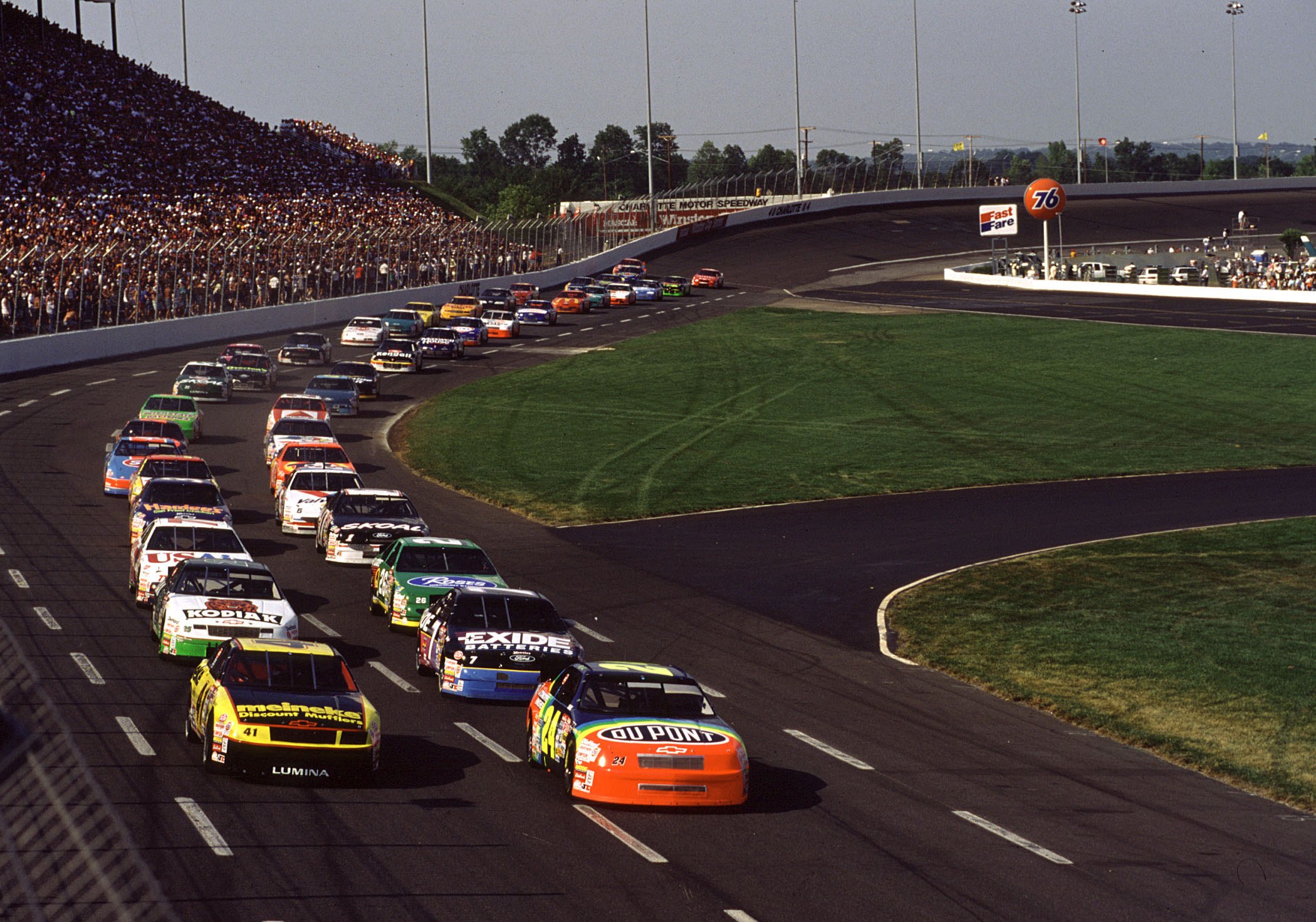
“He hit everything but the pace car that year,” is the famous quote from NASCAR champion Darrell Waltrip, describing Gordon’s lacklustre 1993, but Hendrick never lost faith. One of his most talented drivers was Tim Richmond, and Hendrick saw a lot of his aggression and car control behind the wheel in Gordon.
The following season was key to the foundations of the Gordon empire. He only won two races in 1994 but they were crucial.
Evernham sacked 60 crew members between 1993 and the beginning of 1995 to get the 25 he wanted, but that was just a small part of the revolution.
One of NASCAR’s biggest races, the 600-mile event at Charlotte, seemed an unlikely place for his first win (above). But in an instance of pushing the boundaries he and Evernham would become famous for, they’d practiced taking two tyres instead of four in the lead-up to the event. It baffled everyone when they did it when a caution flew late on, but it was a masterstroke and gave them the win.
Perhaps Gordon’s biggest and most famous single victory followed. The first NASCAR race to be held at Indianapolis – the Brickyard 400 – was one Gordon dominated. Ernie Irvan was the opposition and he got a puncture, allowing Gordon to cap off his amazing rise from aspirations of single-seaters to establishing a NASCAR future at IndyCar’s most famous venue.
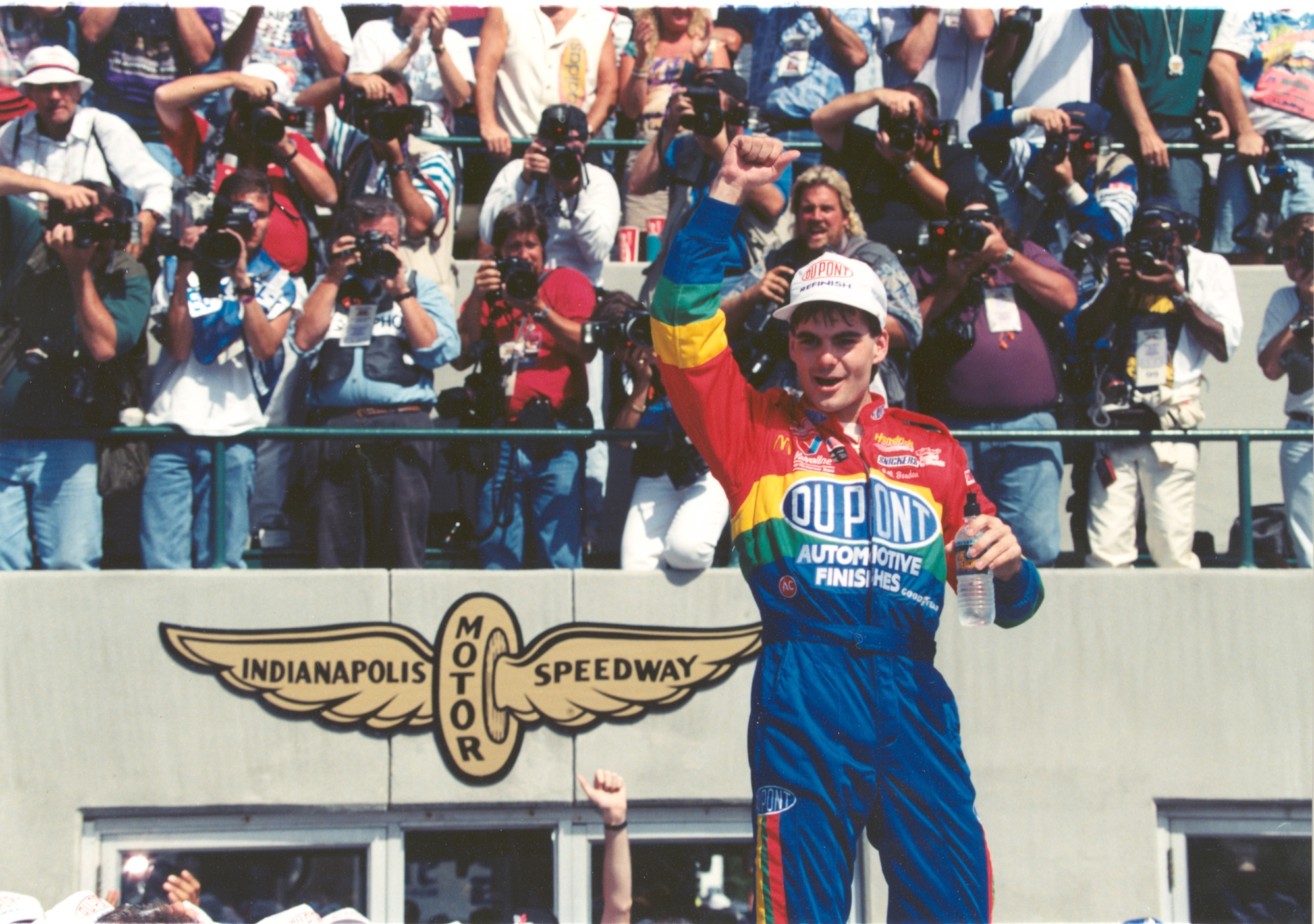
Still, even with the two wins, Gordon and the Rainbow Warriors – the nickname given to his team owing to the livery – only finished eighth in the championship. But those victories showed the team was anchored in the right personnel and ideas.
“We tore up a lot of race cars and it was a steep learning curve,” Gordon tells The Race.
“Especially for me, that I had so little stock car, full-fender type of race car experience. So ’94 was was definitely a big step for us, not just because we won the two big races, but it was just about building this team and getting myself confident and comfortable with 500-mile races and how to finish those races and do it consistently.
“So I think ’94 was a great building block for us to get ready for ’95.”
Evernham sacked 60 crew members between 1993 and the beginning of 1995 to get the 25 he wanted, but that was just a small part of the revolution.
That pit crew was drilled and trained in new ways to minimise the amount of time spent in the pits. Evernham brought new ideas in terms of engineering and aerodynamics, and once he’d spent the first two years shaking up the crew and helping the doubters depart from their “set in their ways” style, the level of talent in the organisation got together was astonishing.
They started 1995 with a poor result at the Daytona 500, but took seven wins and 23 top-10s in 32 races that year to overcome the legendary Dale Earnhardt for the title.
Earnhardt was a working class hero, the son of a cotton-mill worker and the stereotypical good old boy from the south representative of the old image of NASCAR. However, he’d cottoned on to the direction NASCAR was taking far sooner than any other driver
“I’m actually kind of surprised, looking at Earnhardt’s numbers [they] were very, very good,” says Gordon, having watched video in preparation for this interview – perhaps summing him up perfectly as a person.
“Earnhardt was very consistent, especially at the end of the year, we just had more wins. I would say Michigan was probably the big turning point for us. We had two good finishes at Michigan while Earnhardt had two bad finishes at Michigan. But other than that, you know, it was pretty neck and neck.”
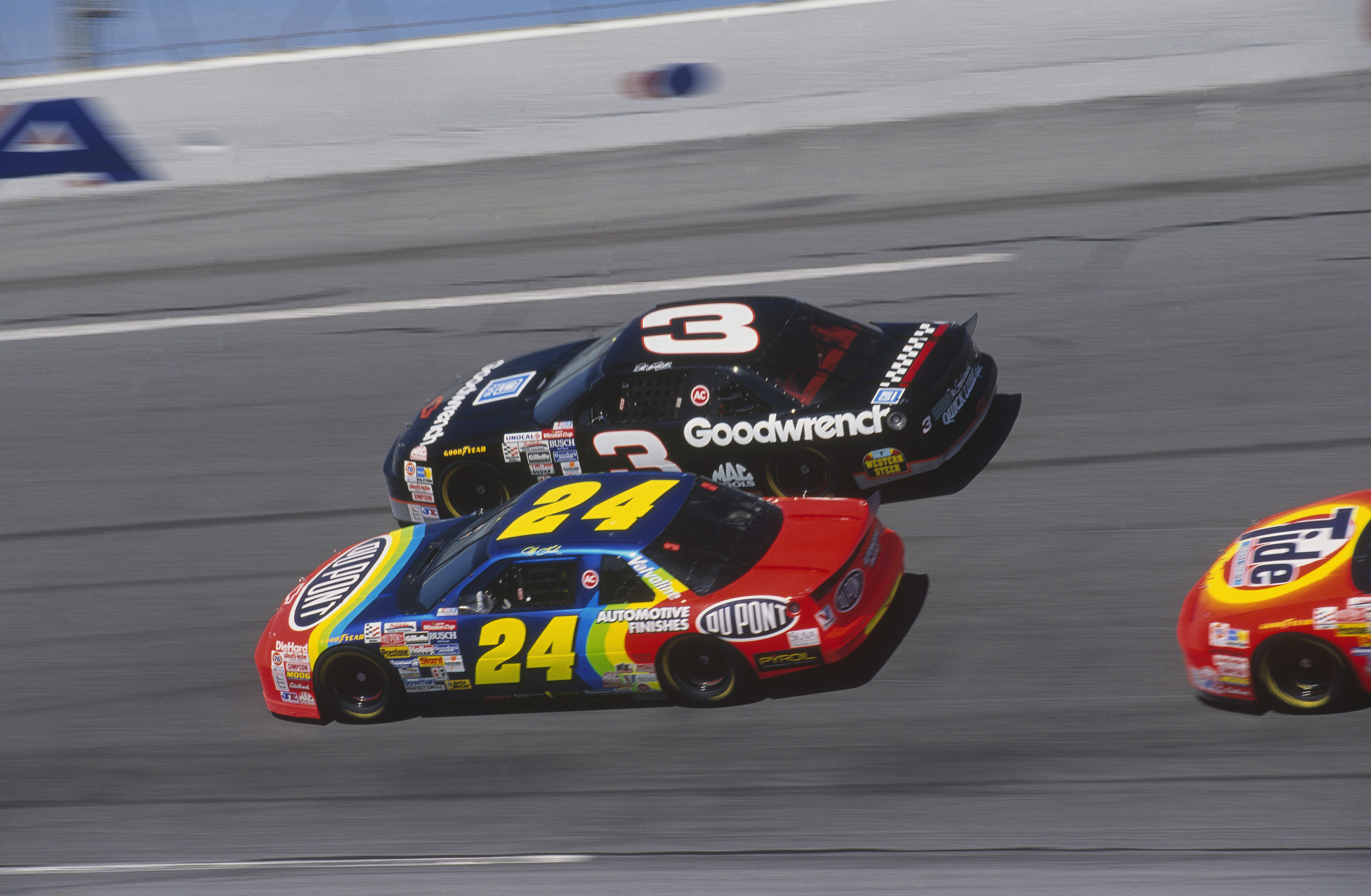
Neck and neck would be the way for the following years, and Earnhardt plays as big a role as perhaps any single person in the story of 1995 and the building of Gordon’s dynasty.
Earnhardt was a working class hero, the son of a cotton-mill worker and the stereotypical good old boy from the south representative of the old image of NASCAR. However, he’d cottoned on to the direction NASCAR was taking far sooner than any other driver. He knew that his nickname – the Intimidator – and the rivalries he created sold tickets and increased NASCAR’s popularity. He exploited that to perfection in building his own empire.
The partisan nature of NASCAR fandom meant there were strong allegiances to a driver, team or manufacturer. Earnhardt’s fans would jeer Gordon, something the latter had to learn to cope with, being subjected to negativity in the limelight through no fault of his own.
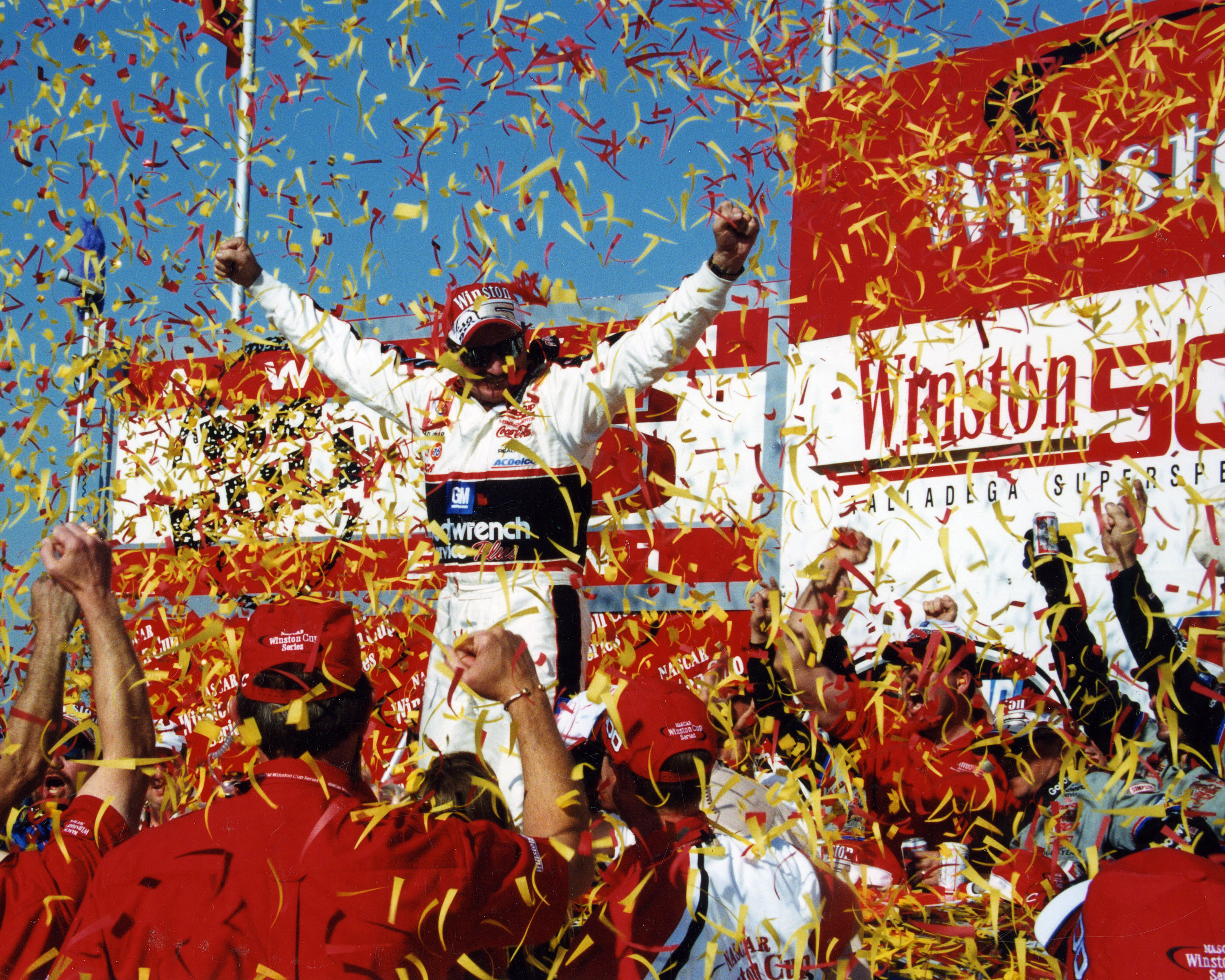
“I wasn’t exactly sure how he felt about me, because it seemed like there were times where he wanted to definitely make my life difficult!” Gordon recalls, as on the track and in the media Earnhardt needled at Gordon at any opportunity.
Perhaps the best early example was when Earnhardt joked that the “boy wonder” – as he often called Gordon – would have to toast everyone at the post-season banquet with milk if he won the title. And after winning the 1995 Brickyard 400 following Gordon’s success the previous year, Earnhardt quipped he was “the first man” to win the event.
At the end of 1995 though, Gordon raised a glass of milk at the awards banquet and if Earnhardt hadn’t realised on track that year he had a worthy opponent, he knew it now.
It was the start of a special relationship that wasn’t obvious at the time. On the track and in the media they were rivals – Earnhardt knew that was good for business – but off it, he was kind and helpful in preparing Gordon for how the business of NASCAR racing was evolving – and how to exploit that.
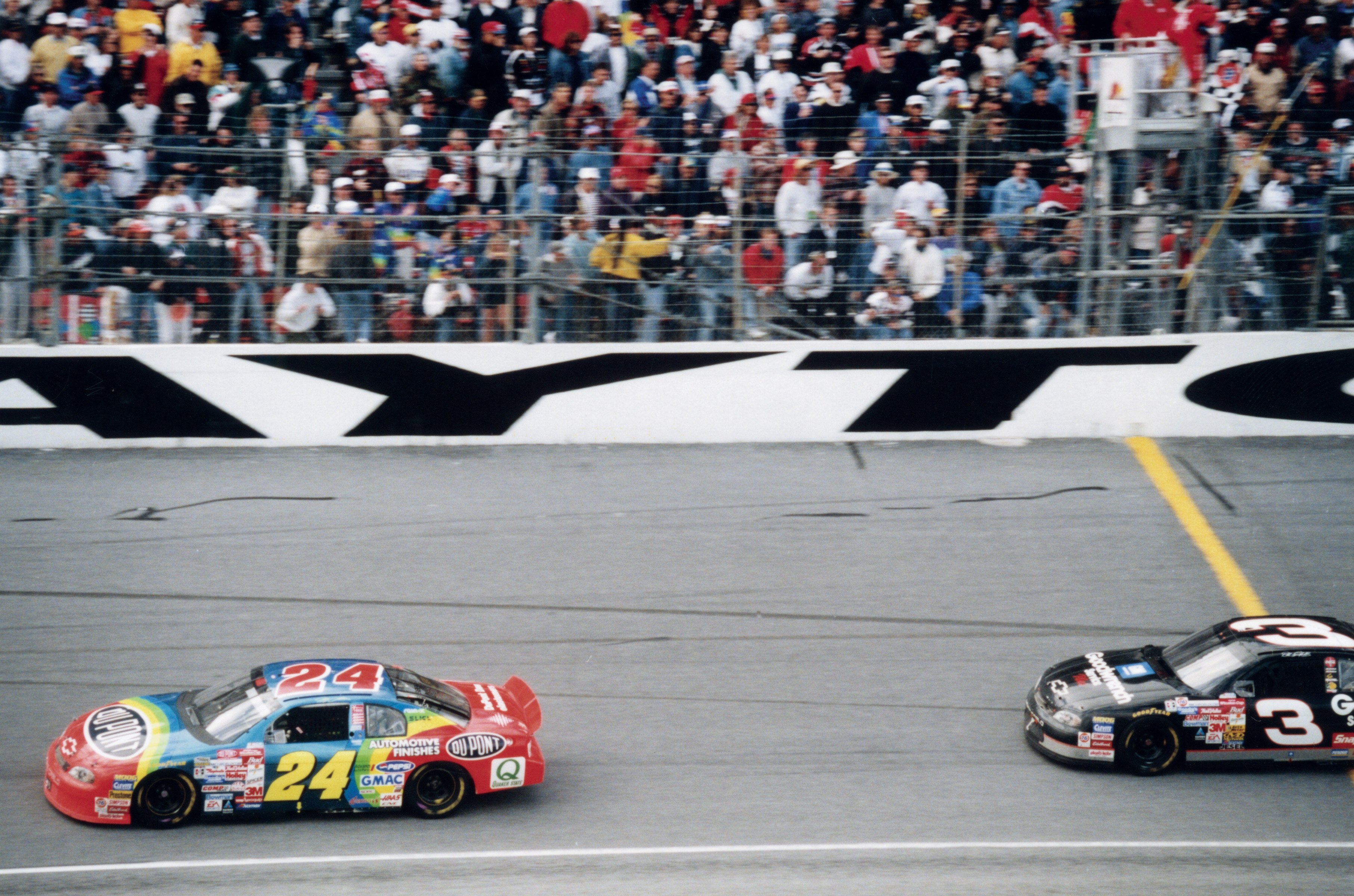
“That’s where our relationship definitely changed,” Gordon recalls of the business discussions with Earnhardt post-1995.
“I appreciated it. I might not have seen his angle as clearly as I do today, because it benefited him a lot. Yeah, he was focused on the business, but he knew that if the sport was thriving, and others within the sport were thriving, and there was great competition and rivalries, that attracted fans, and that would lead to business opportunities.
“And so, he’s the one that really showed me that, and I really respected and appreciate that, especially more now than I ever did then.”
“I didn’t look at it at that time, as much as I do now of how special that time was, how important that was in my career, my life and what was happening within NASCAR and motorsports in America, just blowing up so, so quickly” :: Jeff Gordon
Gordon’s Hollywood good looks led to a new dawn for NASCAR, opening the doors to a commercial world worth hundreds of millions of dollars that the championship has turned into today.
After his 1995 success, Gordon’s life changed forever. Dealing with the level of scrutiny he was put under both in his public and personal life was never easy and particularly difficult for such a young driver then, but he never let that affect him on the racetrack and that’s where the success story stems from.
It’s perhaps because his explosion in terms of how well-recognised and how famous he would become was never planned. The landscape was changing for Gordon day to day and, fundamentally, he was a racing driver trying to forge a career. Not a celebrity executing a well-orchestrated plan to exploit newfound publicity.
“I didn’t look at it at that time, as much as I do now of how special that time was, how important that was in my career, my life and what was happening within NASCAR and motorsports in America, just blowing up so, so quickly,” Gordon says.
“How it was expanding to new tracks, we would go to tracks and just fill the place up and people just standing in line everywhere you went and I saw the celebrity factor. All that really hit for me in ’95, really ’95 through ’98. And I was just taking it one stride at a time.
“It was more about, ‘hey, here’s an opportunity in front of you, what are you going to do with it?’
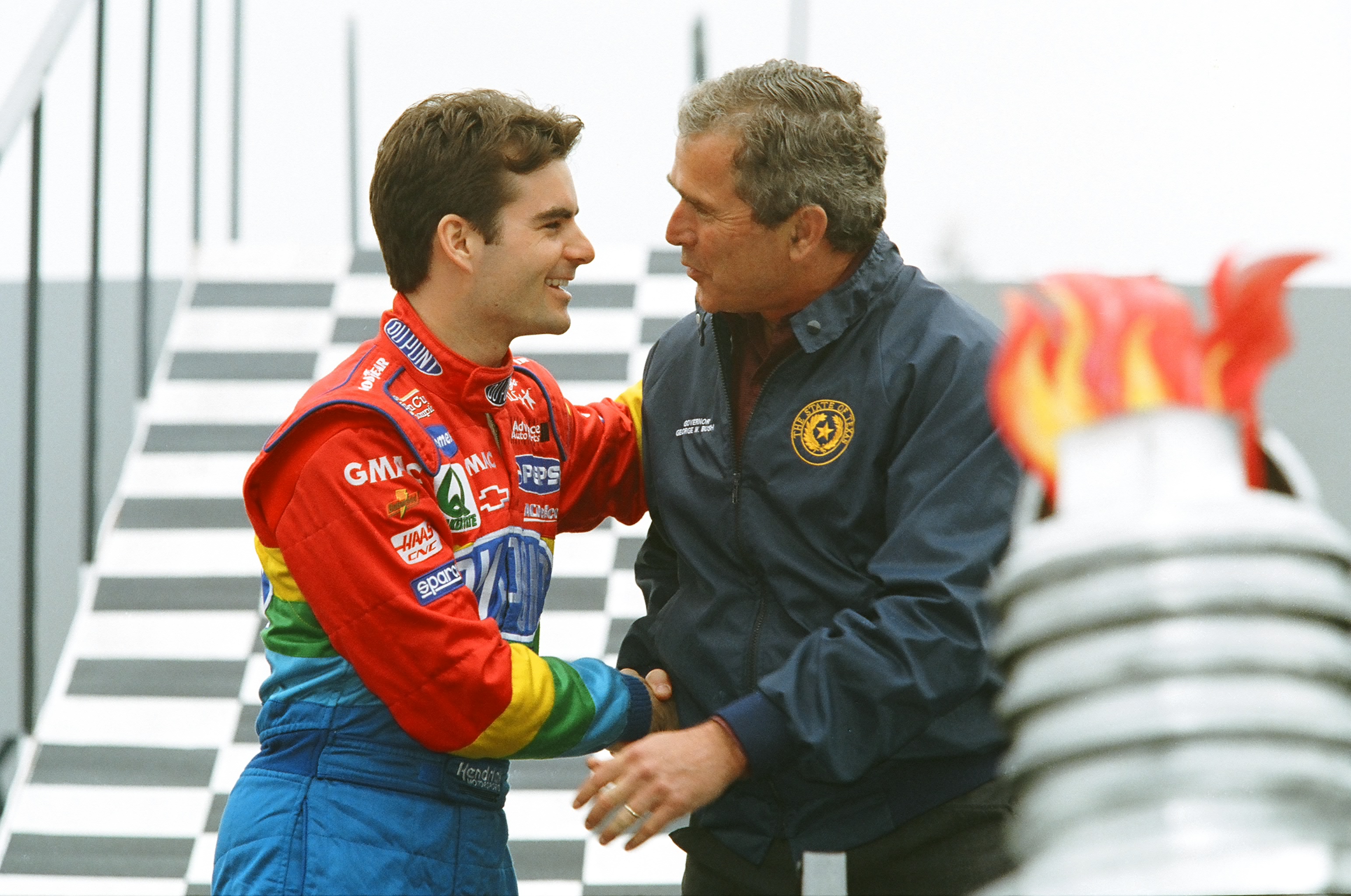
“It wasn’t so much methodical and thought out. And again, I go back to Dale, I think that’s where he played a big role in the sport and even for me, is that he did make it a little bit more that way.
“I don’t know for sure, but I think he’d been around the sport enough and he saw something happening that was taking things to the next level. For me, I came in and that was just sort of what was happening. And I saw these other guys having great success, and I wanted to be like them!”
Gordon went on to win 10 races the next year – yet, amazingly, missed out on the championship – but added 1997, 1998 and 2001 titles to his CV and retired in 2016, having amassed considerable net worth. He has the third-highest number of Cup Series wins and had the Chase playoff format not been introduced, he may well have won more as the adjusted points have him reaching seven titles to match Earnhardt and Petty.
But he’ll likely always be the most famous NASCAR driver of all time, thanks to the 1995 championship and the celebrity status he built around his following successes.
The best part is, he’s still just as humble as the boy who came to NASCAR and shocked the world with his raw talent.
Hendrick still all about youth and success
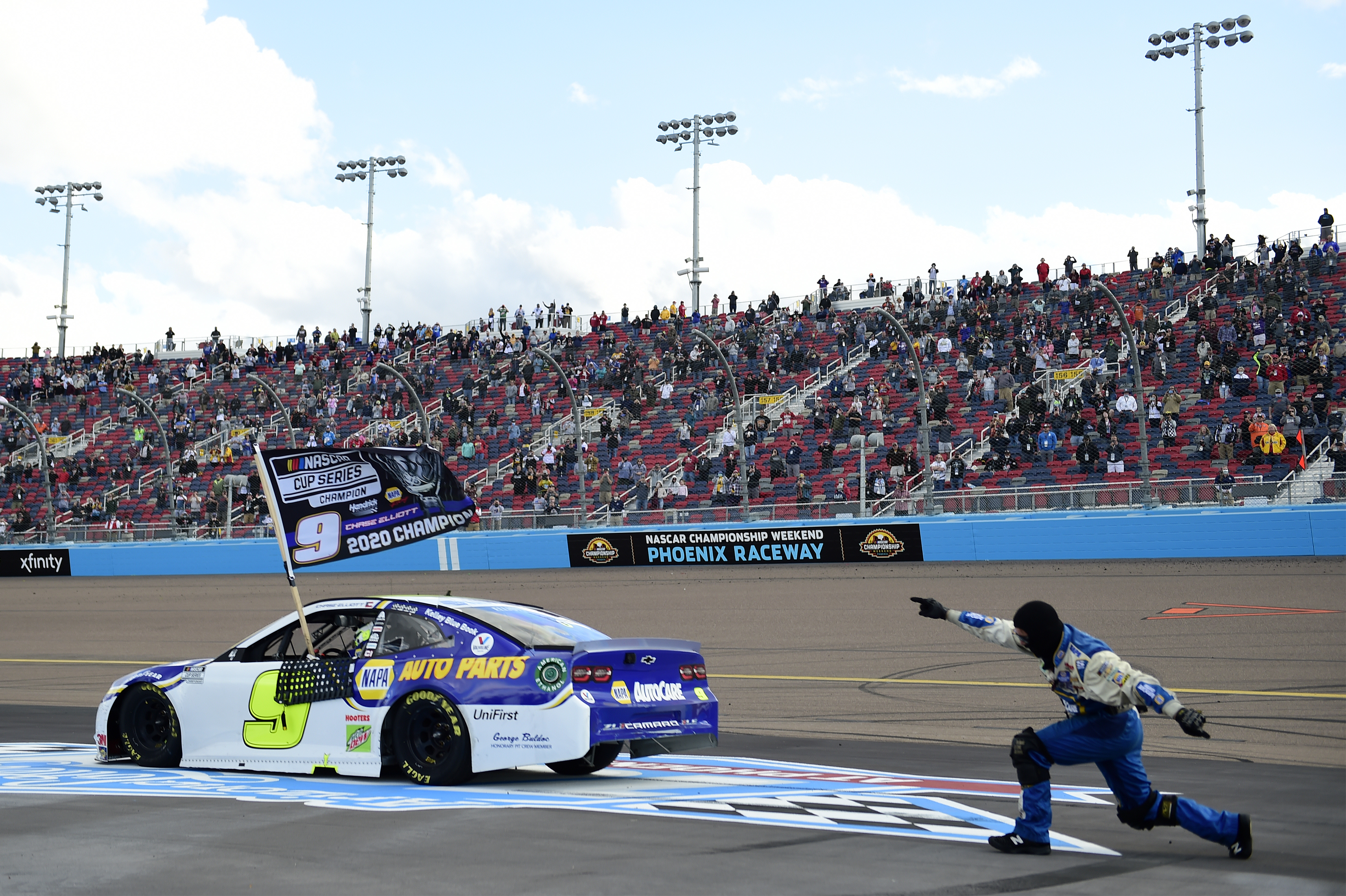
Rick Hendrick gives young, aggressive and talented drivers a chance. It was the case in the 1980s and it is still the case now.
Gordon was the first massive success for Hendrick, and Gordon helped fund the next by becoming the co-car owner with Hendrick for Jimmie Johnson’s entry into the team.
Now, seven titles later, Johnson has left NASCAR for IndyCar, but the team never changes.
As Gordon left his full-time seat in 2015 (he returned part-time to replace the injured Dale Earnhardt Jr in 2016) Hendrick took on Chase Elliott, son of 1988 Cup Series champion Bill.
In 2020, Elliott won the last two races of the year to take his first Cup Series crown at 24, the same age Gordon was in 1995.
Shortly after winning at Phoenix to secure the 2020 title, Elliott was handed a phone.
“Jeff Gordon,” Elliott said. “Jeff was on the other end. There was only so many people allowed [to the track due to coronavirus] this weekend.
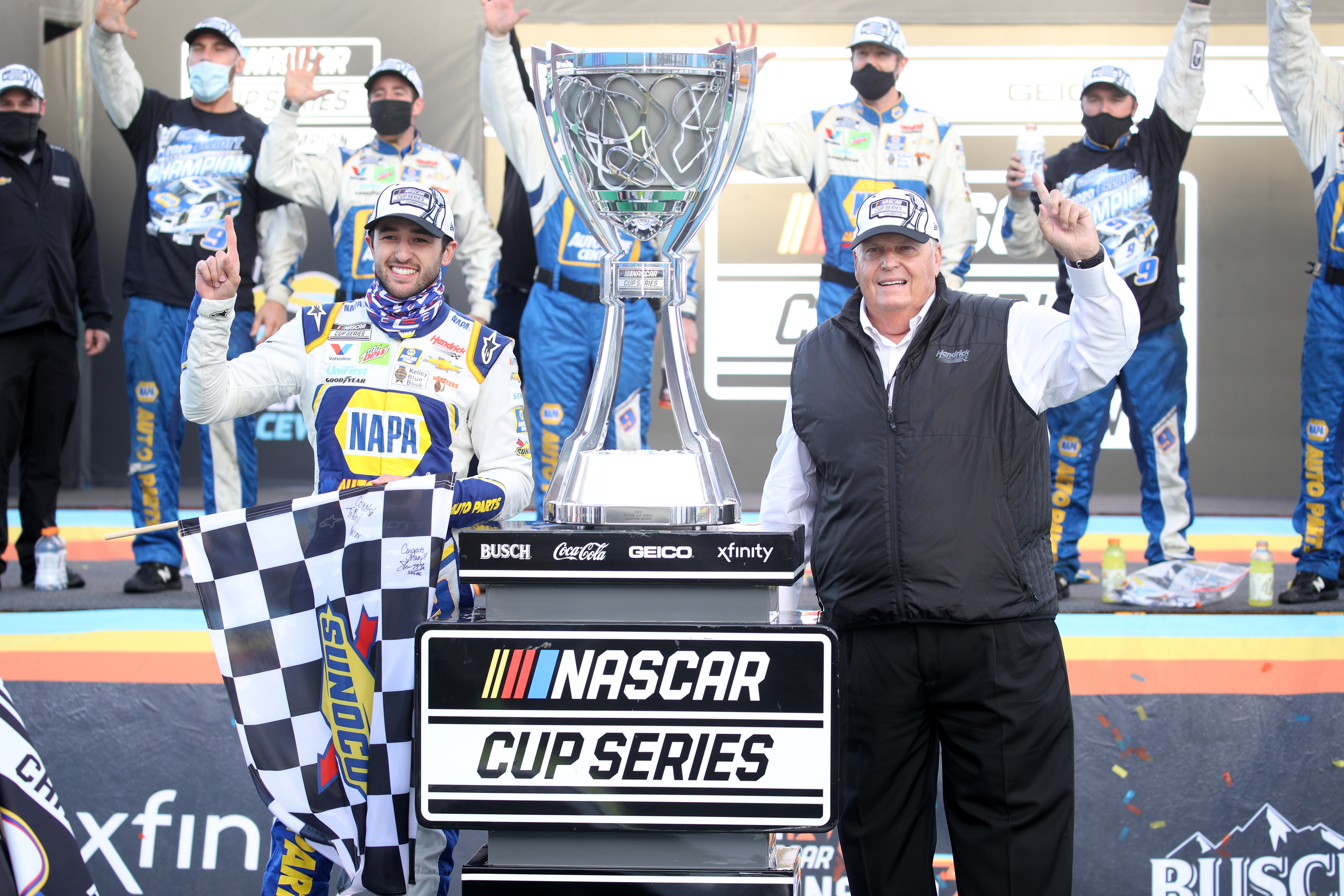
“I was grateful to have my family there. And as you have family and partners and Mr. Hendrick and whatnot, there was only so many spots, and Jeff was gracious enough to stay back home.
“Just really appreciate him calling and reaching out and saying what he did. It’s a big moment for both of us.”
Elliott has firmly taken over Johnson’s baton, but the #24 also still lives on, driven by William Byron.
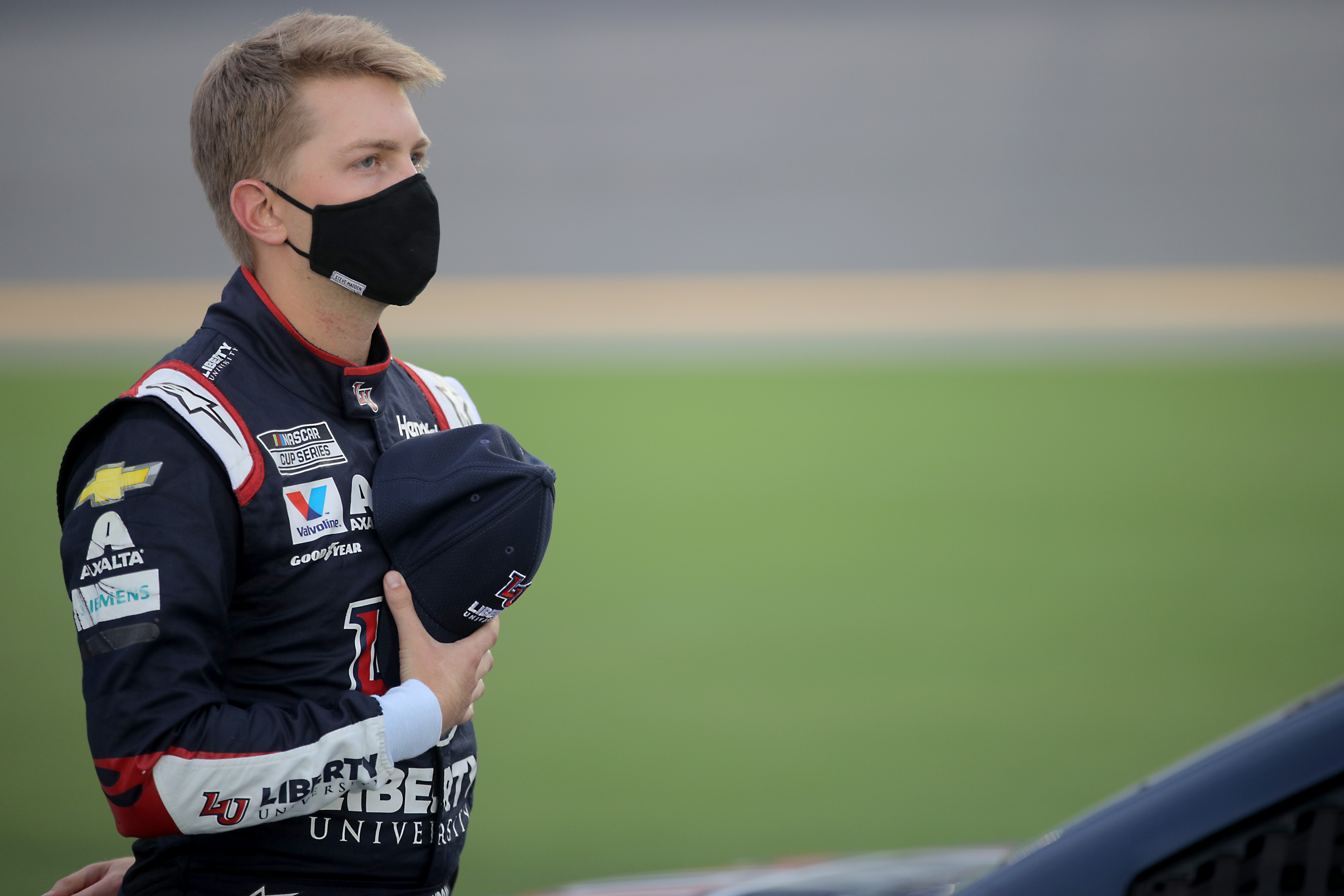
One of the new school, brought up competing on iRacing, Byron was a risky Cup Series promotion – born two years after Gordon’s first title success – at his age and with the pressure succeeding Gordon would bring.
Finally this season Byron’s hard work began to come together and – at the same age as Gordon, 22 – he took his first win at Daytona in August.
Speaking about the pressures of earning that seat, Byron told The Race: “I think it definitely came along with some pressure, but also an opportunity to go out there and improve yourself, and to have a great shot at a top Cup Series ride was a great opportunity for me.
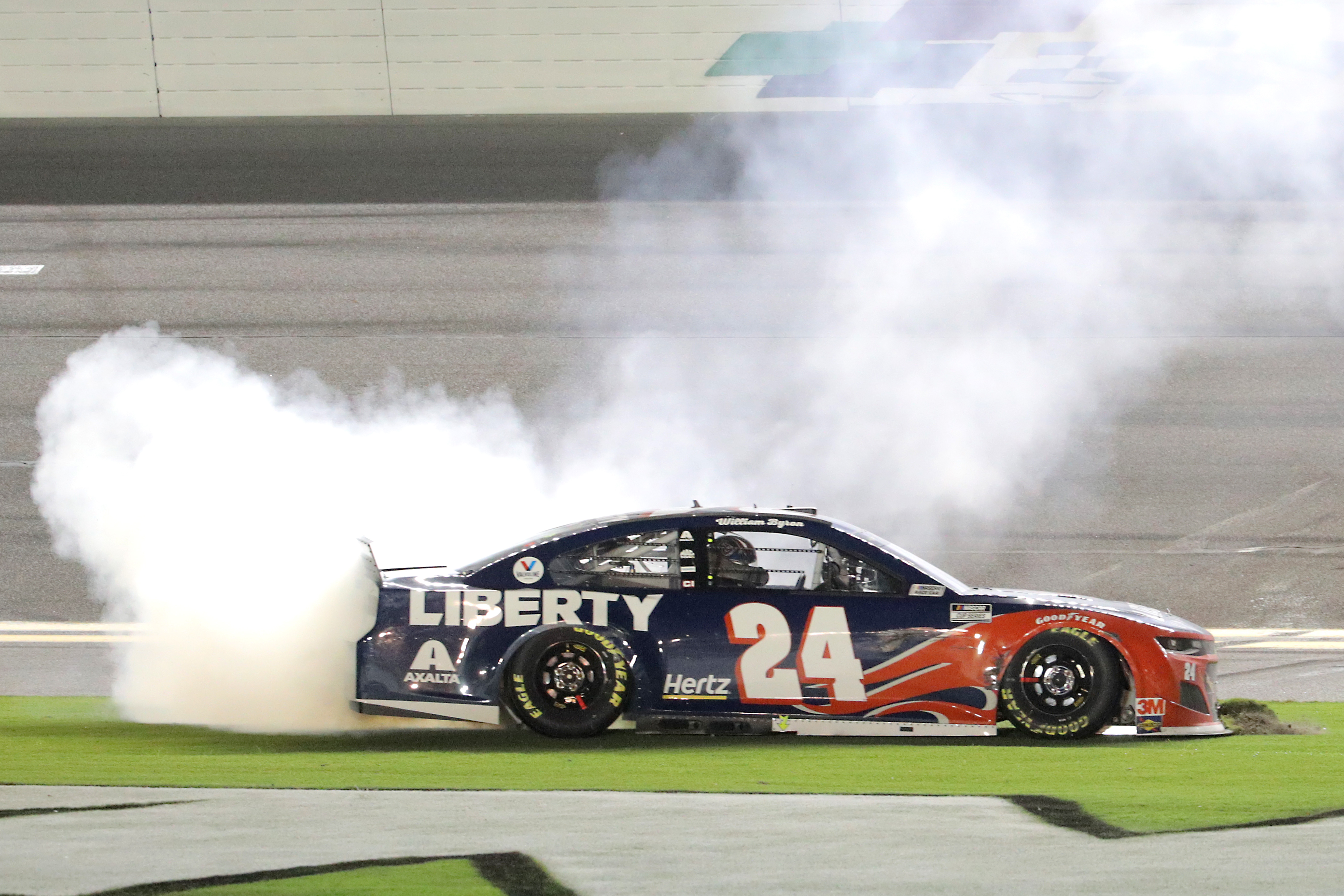
“So I was really fortunate to have that and I feel like it’s largely gone well and hopefully we can continue to have success down the road and continue to just build and evolve from what we are currently. It’s a big blessing to have that attached to me and really all the fandom that comes with it is pretty cool as well.”
Gordon’s success permeates through Hendrick Motorsports, and in a large part it comes down to the team’s unwavering faith in young talent, a blueprint Gordon and Hendrick etched in history together.
Images courtesy of NASCAR

